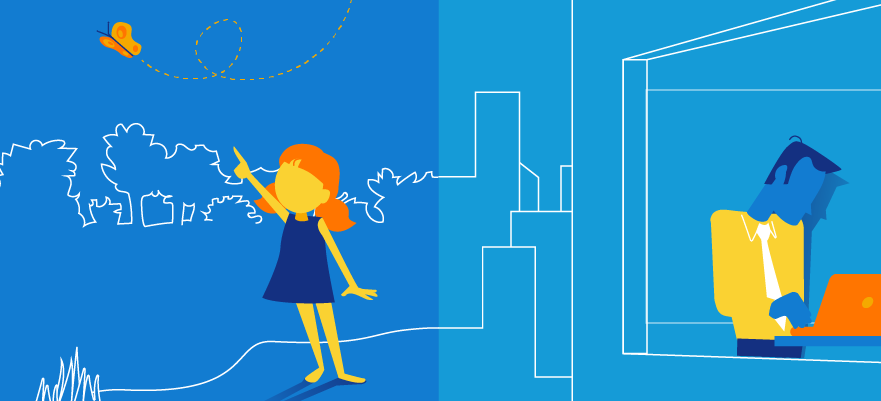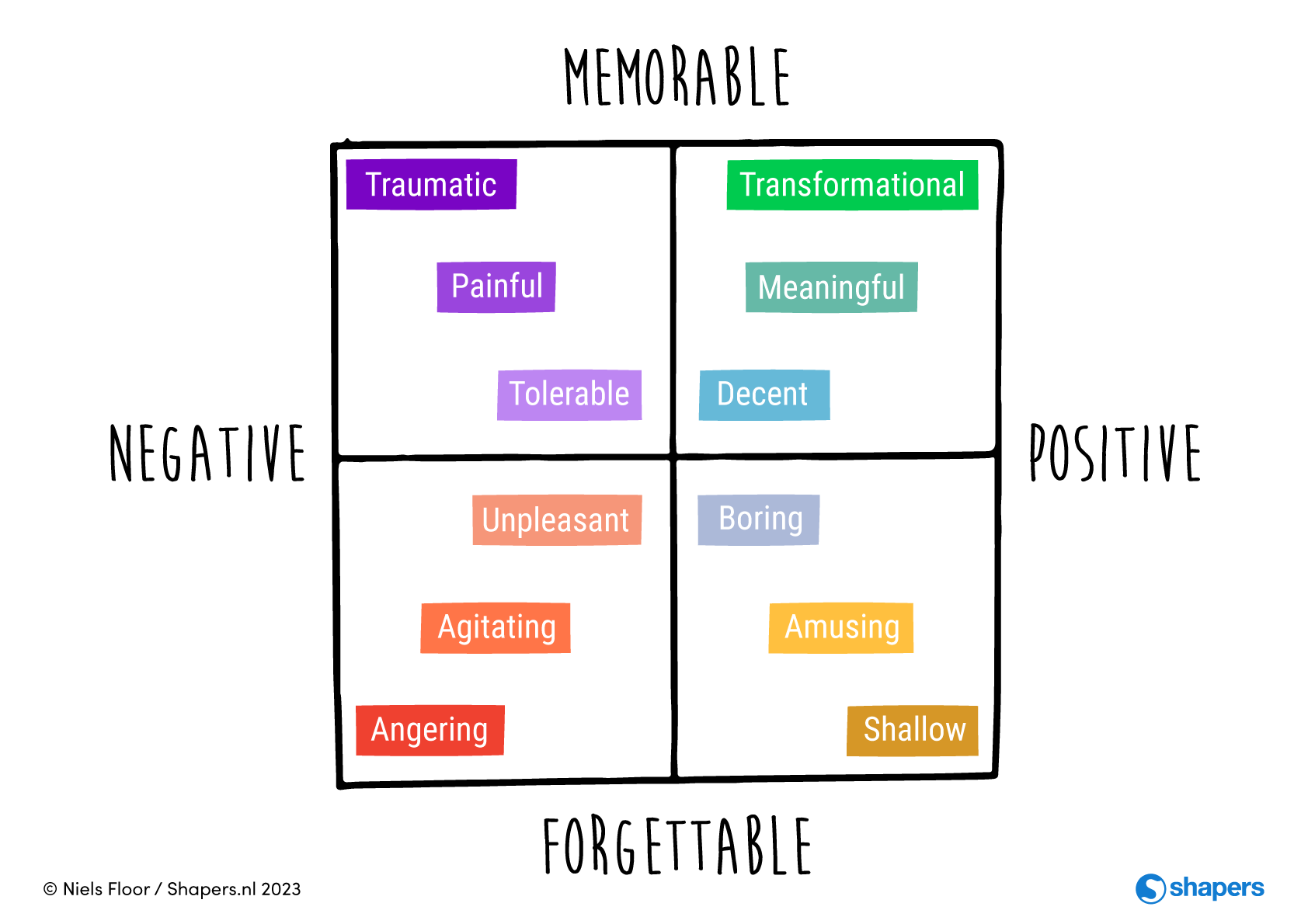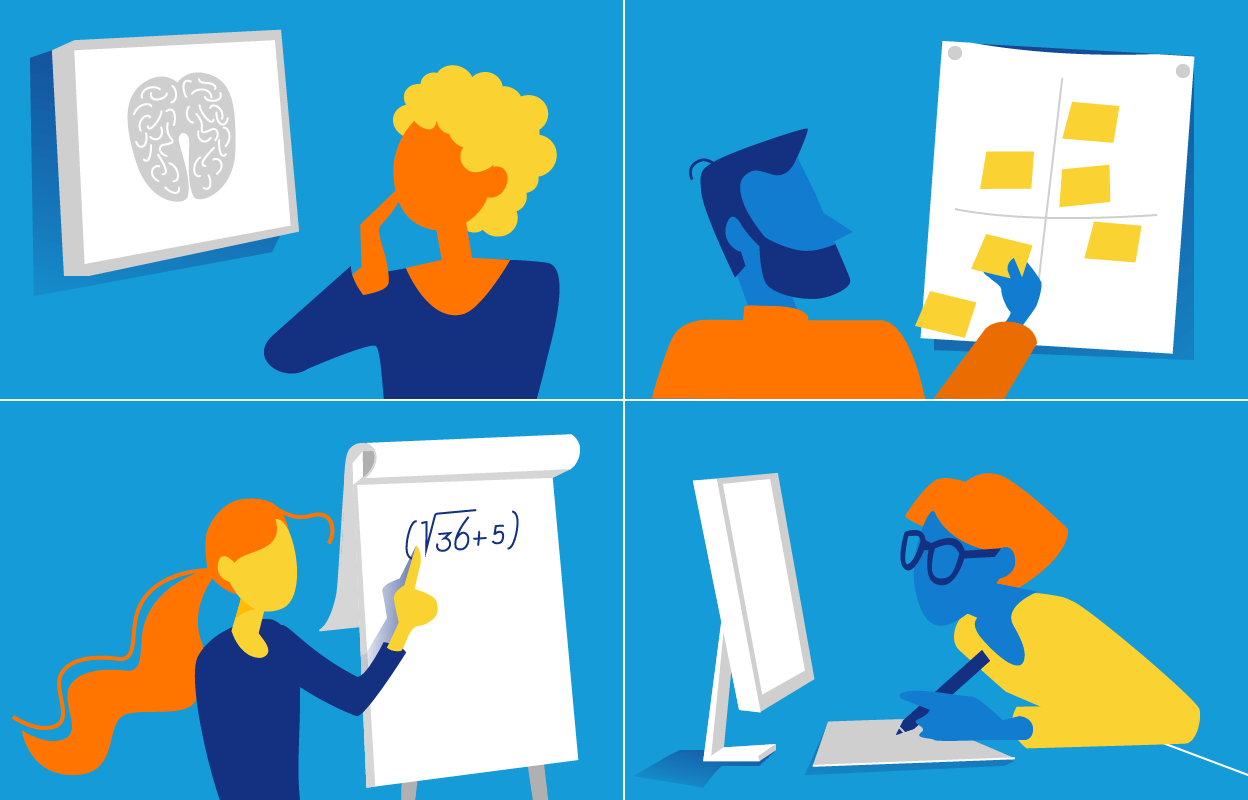What is a learning experience?
Learning experience design (LXD) revolves around the experience of the learner. You might wonder, what is a learning experience?

Your past is a collection of experiences that range from insignificant to transformative. Many experiences are completely forgettable while some are life changing. There is an infinite variety in the experiences we can have and just as many ways to learn from them. Ask ten people to share a learning experience and you are guaranteed to get ten completely different answers. This raises the two questions: What is an experience and what makes it a learning experience?
What is an experience?
"An experience is any situation you encounter that takes a certain amount of time and that leaves some kind of impression."
- Niels Floor, This is Learning Experience Design
This is a very broad definition and for good reason. We’ll get back at the end of this article. For now, it’s time to dissect this definition into smaller parts. Any experience consists of three things: situation, time, and impression. Let’s look closer at each of these elements.
Situation
According to the Cambridge Dictionary a situation is “the set of things that are happening and the conditions that exist at a particular time and place.” Think about the situation you are in right now while reading this. Where are you? What’s happening around you? What time is it? You can imagine that for each reader this is different. While you may read this at home in the evening while it’s nice and quiet, someone else may be riding a busy subway on their way to work early in the morning. The situation you are in will influence what you experience and how you experience things.
Time
Without time, there is no experience. Experiences takes place over time; like listening to music, watching a movie, attending a lecture, or waiting for the bus to arrive. Any experience has a beginning and an end. Interestingly, the beginning and the end are generally the parts that are best remembered. Making the middle part just as memorable is up to the learning experience designer.
As Albert Einstein explains, time is relative. A fun day seems to fly by while a visit to the dentist never seems to end. Emotion is the primary factor that influences how fast time passes by. That’s important to keep in mind when you design a learning experience.
Time is our most precious commodity. The time you spend can never be given back. Whenever you design a learning experience, think about how much time you ask from the learner and what you offer in return. What the learner gets out of a learning experience should always outweigh the time they spent.
Impression
At the end of any experience, you are left with an impression. The impression determines what you will remember from the experience, what you have learned, and how it made you feel. Simply put, it’s about the impact of the experience and to what extent it changed your life.
While learning experience designers aim to have a big impact on the learner, not every experience can nor should be life changing. You need to strike a balance when it comes to the impact that you design for. Niels Floor created the Experience Impact Model that illustrates how experiences can vary in terms of positive and negative impact.

Experience Impact Model
It’s easy to spot the types of experiences that are preferable in this model. The upper right corner is where you want the experiences you design to fit in. These are the experience that have a big positive impact. Of course, life doesn’t work that way and often the most impactful experiences occur outside of our control.
Take a moment to think about some of your recent experiences and see where they fit in. The first experiences that pop up are the most memorable. Chances are these experiences also have a strong emotional element to them, either positive or negative. Some experiences are already forgotten and may feel like a hole in your memory. As you can imagine, we have a wide variety of experiences on a daily basis.
Experiences you can(‘t) forget
Whether forgettable experiences are either positive or negative doesn’t really matter in the long run. Of course, a positive experience is preferred but if you won’t remember it the impact is low. The opposite is true for memorable experiences. Having a highly positive or negative experience that is unforgettable can change your life for better or for worse.
It’s important to keep in mind that our experiences are subjective. A negative remark by a teacher can have a huge impact on a student. While the teacher probably forgets this experience almost immediately, the student may find it painful and even traumatic. On the other hand, there are many examples of painful experiences that can teach valuable lessons and have a lasting positive impact. Like entrepreneurs who use rejection and adversity to develop perseverance to become highly successful.
What is a learning experience?
A learning experience is any experience you learn from. Simple as that!
It can take place in school, on the job, in a museum, at home, in the outdoors or anywhere you can imagine. It can be in the real world, a virtual environment or a combination of both of them. We know, that’s a bit of an anticlimax. Don’t worry, there’s more to the story.
There is a difference between a spontaneous learning experience and a designed learning experience. Both can have a valuable learning outcome, but a designed learning experience doesn’t happen by accident. It is created with intent.
“A learning experience is a holistic experience that is intentionally designed and carefully crafted to help the learner achieve a meaningful learning outcome that is (mostly) predefined.”
- Niels Floor
Formulating a learning outcome and figuring out the way that leads the learner to this outcome is nothing new. That’s how educational systems have operated for centuries. What sets learning experience design (LXD) apart from other approaches is the focus on the overall experience of the learner and the way creative design skills, tools and methods are used to shape these experiences.
Just like user experience design is about more than building a website or app, learning experience design is about more than developing a course, training, or curriculum. It’s about designing the complete experience from start to end. While instructions, exercises, tools, and assessments can be part of the learning experience, they are not the learning experience itself. A learning experience is a personal journey that encompasses all that you do, think, and feel from the moment you enter the experience to the moment you’re done and even beyond. This makes the experience holistic as you combine the cognitive aspects of learning with the personal, emotional, physical, and circumstantial aspects of human experience.
(Un)intended results
Unless you focus on designing the overall experience, the learning experience is an unintended result of your design. For example, let’s say you design a self-paced online course you may focus on creation, curation, structuring, and delivery of content. This approach sounds logical, but you are missing out on a lot:
- How do you know if your design fits into the life of the leaner?
- Is the learner motivated or demotivated to continue and why?
- How is the learner feeling throughout the experience?
As a result, the overall experience is out of your hands and some learners may enjoy the experience while others are frustrated.
Creative freedom
At the start of this article, the importance of using a broad definition of the term experience was mentioned. Here’s why that’s so important. Traditionally, learning experiences can be quite limited in terms of how they are designed. Just look at our experiences at school, these are typically quite predictable where the format is generally the same. It’s the teacher and the topic that changes. It’s not to say that these are bad experiences, in fact, these can be great experiences. The point is that so much more is possible. If any experience can be a learning experience, the possibilities are virtually endless. Embracing these possibilities offers an abundance of creative freedom that’s perfect for creative professionals like learning experience designers. Use that freedom to create the best possible learning experiences you can imagine!
Up Next

The origin of learning experience design
Learning experience design is an interdisciplinary field of expertise. It incorporates elements of different disciplines like interaction design, neuroscience, cognitive psychology and teaching. It merges them into a completely new design discipline.
